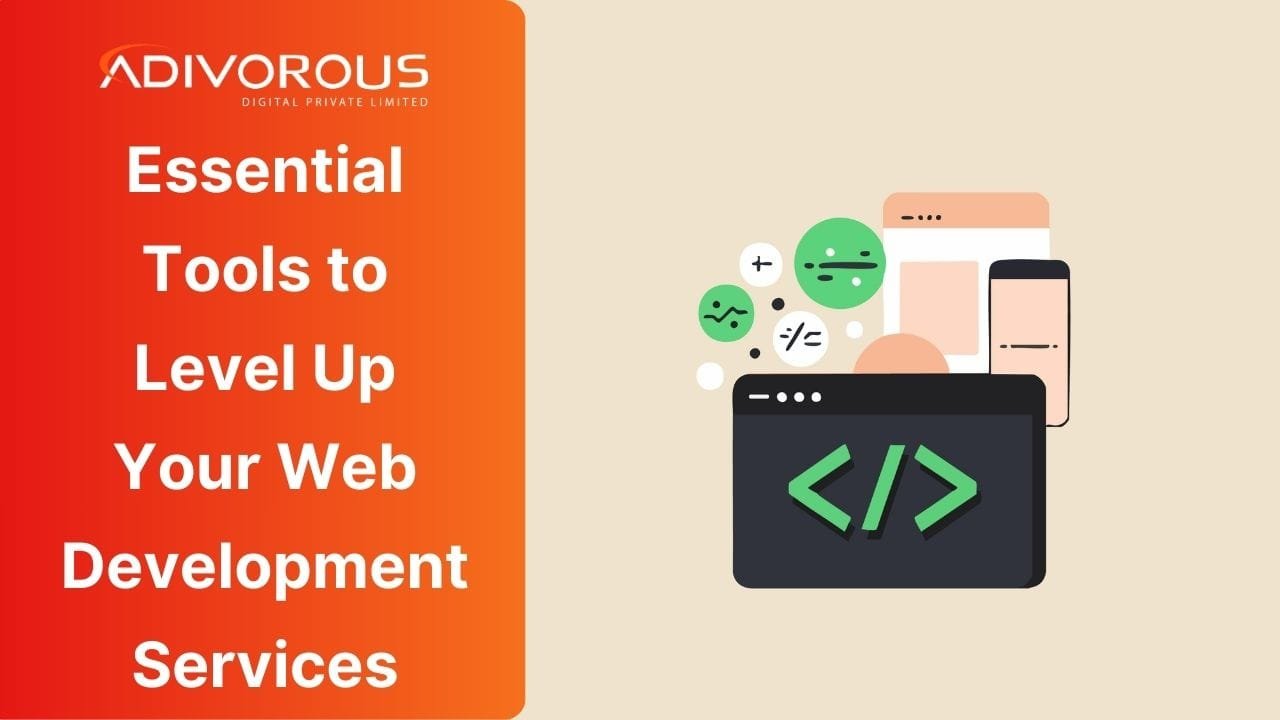The landscape of website development services has changed dramatically in recent years. The “best” service is no longer just about clean code; it’s about choosing the right ecosystem that balances speed, scalability, and user experience. Whether you’re building a high-performance web app or a quick marketing site, the tools you choose can make all the difference. Therefore, in this post, Adivorous will share the tools we employ to make our websites of our pertners great! Each of these tools represents the industry standard for professional web development services.
The Front-End Ecosystem: Bringing Visuals and Interactivity to Life
Front-end tools are essential web development services that shape the look and feel of what users interact with. The trend is shifting strongly toward component-based frameworks, enabling developers to create reusable UI elements that boost consistency and speed. For example, React.js is a tool developed by Meta. This is still the unmatched leader among front-end libraries, with a huge ecosystem that lets developers create dynamic, high-performance user interfaces. It’s perfect for building complex platforms like dashboards or social networks.
Another candidate on the list is Vue.js, which is known for its gentle learning curve, and it is a progressive framework. Vue is a super flexible tool that you can easily add to an existing page for small interactive features or use to build a full single-page application (SPA).
Tailwind CSS is also a popular front-end system, which is a utility-first CSS framework that has revolutionised styling. Rather than creating custom CSS files, our developers use pre-existing classes directly in the HTML. This keeps the design language consistent, easy to maintain, and effortlessly scalable.
Back-end and infrastructure: managing logic and handling data
In web development services, this is the engine room. Modern back-end tools prioritise security, real-time data handling, and API integration. The following programmes are revolutionising this sector with breakthrough innovations:
- Node.js: It lets developers use JavaScript on the server side, bringing web development into one unified language. Known for its non-blocking architecture, it’s ideal for real-time applications like chat platforms or collaborative tools.
- Django (Python): Django is known as the framework for perfectionists with deadlines, offering a “batteries-included” approach with built-in features like authentication, sitemaps, and RSS feeds. It’s a top choice for building data-heavy apps and secure enterprise websites.
- Supabase: If you love that sweet freedom of open-source, it is the right alternative to Firebase. It offers backend-as-a-service (BaaS) with a real-time database, authentication, and file storage, enabling developers to set up a complete backend in minutes instead of weeks.

No-Code/Low-Code Revolution: Speed and Flexibility Combined
For many businesses, the ideal development service lets non-technical teams make their own updates. Webflow is well-known for bridging the gap between visual design and code, producing clean, semantic HTML, CSS, and JavaScript, unlike standard builders. It’s the go-to choice for marketing websites that need to be highly customised yet easy for marketing teams to manage. Our personal favourite is Bubble, a powerful platform for creating functional web apps (SaaS) without any coding. It handles databases and logic visually, enabling founders to launch MVPs (Minimum Viable Products) in no time.
| Tool Name | Category | Pricing Model | Best Use Case | Key Strength |
| React.js | Front-End | Free (Open Source) | Large-scale, interactive web apps (Facebook, Netflix) | Huge community & reusable components. |
| Node.js | Back-End | Free (Open Source) | Real-time apps (Chat, Streaming) | Fast execution & unifying JS across the full stack. |
| Webflow | No-Code | Freemium / Subscription | Marketing sites & Portfolios | Clean code export & total design freedom. |
| VS Code | Code Editor | Free | All coding tasks | Infinite customizability via extensions. |
| Figma | Design | Freemium | UI/UX Prototyping | Real-time collaboration for design/dev teams. |
| Django | Back-End | Free (Open Source) | Secure Enterprise Apps | High security & rapid “batteries included” setup. |
Conclusion
Today’s web development scene is all about a mix of convergence and specialisation. The best web development services aren’t just about mastering one language, but about knowing how to choose and combine the right stack to meet a client’s unique goals. Also, check out our latest post on the Best Digital Marketing Strategies in the AI Era.
FAQs
- How do I decide between using a No-Code tool (like Webflow) and Custom Code (like React)?
- Go with No-Code if you want to launch quickly, your site is mostly informational, or you need non-developers to handle design updates.
- Opt for Custom Code (React/Node) if you’re creating a complex app with unique logic, need fast data processing, or plan to scale to millions of users while maintaining full control over the infrastructure.
- What is the difference between “Front-End” and “Back-End” development tools?
- Front-end tools like React and Tailwind manage the client-side, everything users see and interact with, from buttons and layouts to animations.
- Back-end tools such as Node.js, Python, and databases handle the server-side, processing data, storing user information, and managing security behind the scenes. Full-stack development means working on both sides at the same time.
- Are open-source tools like React and Node.js actually free for commercial use?
- Yes, for the most part. Tools like React (MIT License) and Node.js are open-source and free to use in commercial projects.
- But “free” only applies to the license; you’ll still have expenses for hosting (AWS, Vercel), developer time, and possibly paid third-party libraries or plugins you add to the mix.
- Which tool is best for ensuring website security?
- Security isn’t usually about one specific tool, but the overall design of the framework. Django is well-known for its strong security since it blocks common threats like SQL injection right out of the box.
- On the front-end side, keeping libraries up to date (using npm audit) and choosing secure hosting platforms like Vercel or Netlify are key to protecting your setup.






